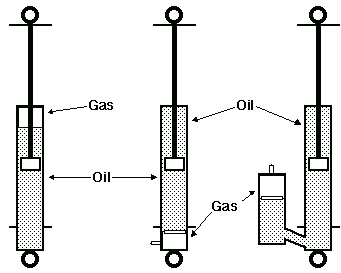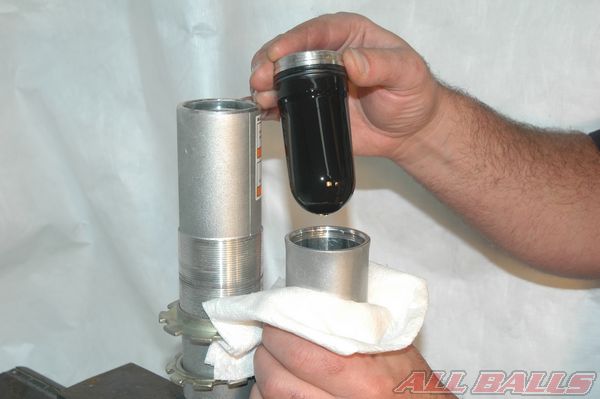A true 'Gas Strut' doesn't have any Oil in it (other than a very small amount for lubing the piston), it's what you'll find under your office chair, or holding up your Bonnet/Tailgate.
Gas struts for Suspension are Oil-damped, and as WMF pointed out, there is pressurised gas to control 'Aeration' or 'Emulsification' of the oil.
Cheaper gas shocks just have the gas mixed in with the oil, they're called the 'Emulsion' types. (Left in pic)
The best Shocks have the gas separated from the oil by another 'free-floating' piston at the end of the unit (centre), or in the case of most Bike shocks, in an external reservoir (right).
There is another type, which has the gas in a sealed 'bladder', fixed in the base of the body or remote reservoir (pic), or in a 'bag' which surrounds the cylinder assembly.
Edit; As WMF also pointed out, a shock can fail (lose all it's damping) without leaking at all.
Oil is made up of 'chain' molecules, it's what gives it it's 'thickness' (Viscosity).
When it's forced through the damping system (valves, tiny holes, etc) of a shock, the oil's 'chains' get broken down steadily, until it ends up
much 'thinner', and no longer gives the amount of damping needed.




